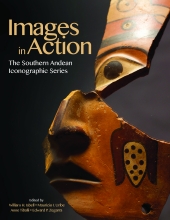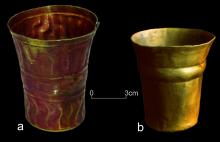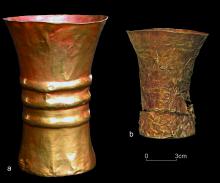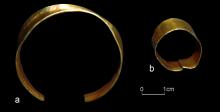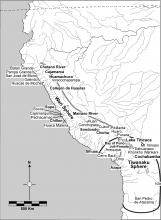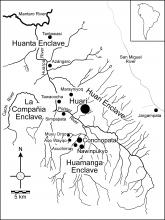Visual database
Keros in Tiwanaku style from Pueblo Viejo de La Cueva. (a) embossed vessel with red paint; (b) plain vessel with constricted throat. A. Linares collection.
Keros of gold from the Quebrada de Humahuaca. (a) Volcán, with two constricted throats, ME 2276; (b) Hornillos, with deformation and breakage ME -90407.
Diadem of gold, El Morro, Tomb 11, La Isla, ME 2989.
Llamas figures cut from sheets of gold: El Morro, Tomb 11, La Isla, ME 3000 and 3001.
Pectoral adornos of gold, El Morro, Tomb 11, La Isla: (a) ME 2990; (b) ME 2991; (c) ME 2992.
Jingle bells and bird effigy of gold: (a) El Morro, Tomb 11, La Isla, ME 2996; (b) ME 2994; (c) Pueblo Viejo de La Cueva, ME 31-326.
Bracelet and ring of gold from Pueblo Viejo de La Cueva: (a) ME 31-323; (b) ME 31-324.
Tiahuanaco, Huari, and their Middle Horizon spheres of influence. The map shows the overlap of the two spheres, as well as each capital, important secondary sites, and key geographical areas (in bold text). Drawing by William H. Isbell.
The Ayacucho Valley locating Huari, Conchopata, and other heartland settlements of late Huarpa and Wari cultures. Drawn by William H. Isbell.
Probable dates for events discussed in text, plotted against currently popular chronologies for Tiahuanaco and Huari. Dates are intended to represent calibrated years (but not Southern Hemisphere corrected). As stated in the chapter text, the date of cal. AD 500 seems too early for the onset of the Tiwanaku Period at Tiahuanaco; AD 650 to 700 seems more likely, at least for the radical changes in ceramics that brought in new vessel forms decorated with new polychrome design themes, as well as the appearance of SAIS-style stone sculptures. Drawn by William H. Isbell.
